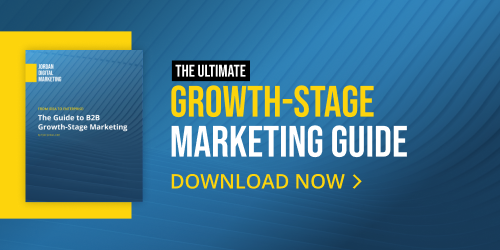Google's Original Conversion Value Metric: What to Know
Offline conversion data can provide valuable insights into the effectiveness of your Google Ads campaigns, but it can be overwhelming to know what to do next once you have the data.
By tracking the actions that users take offline, such as phone calls or taking steps to become a qualified lead, you can gain insight into how your ads are impacting your business and make data-driven decisions to optimize your campaigns.
In this blog post, we will discuss four types of analysis you can do with offline conversion data to help optimize your Google Ads campaigns.
If you aren’t yet using offline conversion data in Google Ads, check out these posts on how to connect CRM data to Google Ads and how to optimize around offline conversions.
1. ROAS Analysis
If you’re not selling products or service packages directly from your website, you’ll need to integrate offline conversion data into your ad campaigns to tie revenue generated back to specific campaigns. This will allow you to calculate your return on ad spend (ROAS).
Calculating the ROAS of your campaigns allows you to determine how much revenue you are generating for every dollar you spend on ads. By comparing the ROAS of different campaigns, you can identify which campaigns are performing well and which are not. This information can help you make data-driven decisions about where to allocate your ad budget.
2. Pipeline Analysis
Pipeline analysis is the process of tracking the progress of leads through your sales funnel. By analyzing your offline conversion data, you can identify which keywords and ads are driving the most leads and how those leads progress through the sales process.
This information, which is produced by integration between your ad campaigns and your CRM data, can help you optimize your campaigns to increase the number of leads that convert into paying customers.
Here’s an example of what those columns might look like in our reports for clients:
The lead column is the data that comes from the ad platform itself, while MQL, SQL, and Opp in this example are the conversion actions that come from the CRM.
3. Keyword Analysis
Now that you have your offline data integrated and can see which leads are resulting in different KPIs like Sales Qualified Leads (SQLs), Opportunities, or Wins, a keyword analysis will show which individual keywords within your Google Ads campaigns are driving each. This is helpful to see which keywords are driving the best actions further down the funnel, so you can focus your ad budget on those keywords.
For example, let's say you have a keyword that drives a lot of efficient leads. When you look closer at the offline data, you might notice that the keyword hasn’t generated any SQLs, Opps, or Wins. Although this keyword is efficient and a high-volume lead driver, it isn't actually helping move the needle for your business. On the other hand, you may have a keyword with a high CPL with an extremely high lead-to-opportunity ratio. Without offline data to make a business case for that keyword, you might decrease bids and cut off a great revenue source.
The benefits for this analysis are twofold: 1) you can focus on your best-performing keywords; 2) you can confidently reduce spend on keywords that aren’t producing the end result.
4. Ad Analysis
After you've selected your target keywords, ads arguably play the most important role in your Google campaigns. You don't have many characters to tell your target audience how you can help them with your product, so it's essential that you do continuous message testing.
With insight from your offline conversion data, you can take this a step further than just conversion rates (CVRs) and click-through rates (CTRs). You can actually see which messaging helped a user purchase your product or take an important action down the funnel. By identifying which ads are performing well for those down-funnel metrics, you can begin to double down on high-performing ad copy and re-evaluate poor performers.
Start Analyzing!
Offline conversion data is a powerful tool for measuring the effectiveness of your Google Ads campaigns. By analyzing your pipeline, ROAS, keywords, and ad performance, you can make data-driven decisions to optimize your campaigns and increase your return on ad spend.
By focusing on these types of analysis, you can gain valuable insights into how your ads are impacting your business and make the most of your ad budget.
To learn more about how we help our clients with offline conversion tracking and down-funnel reporting, send us a message!

Feb 1, 2023 12:16:00 PM


-Dec-17-2025-09-01-13-5742-PM.png?width=500&height=500&name=Regular%20Blog%20Hero%20(2)-Dec-17-2025-09-01-13-5742-PM.png)


-Dec-04-2025-09-58-32-5416-PM.png?width=500&height=500&name=Regular%20Blog%20Hero%20(1)-Dec-04-2025-09-58-32-5416-PM.png)